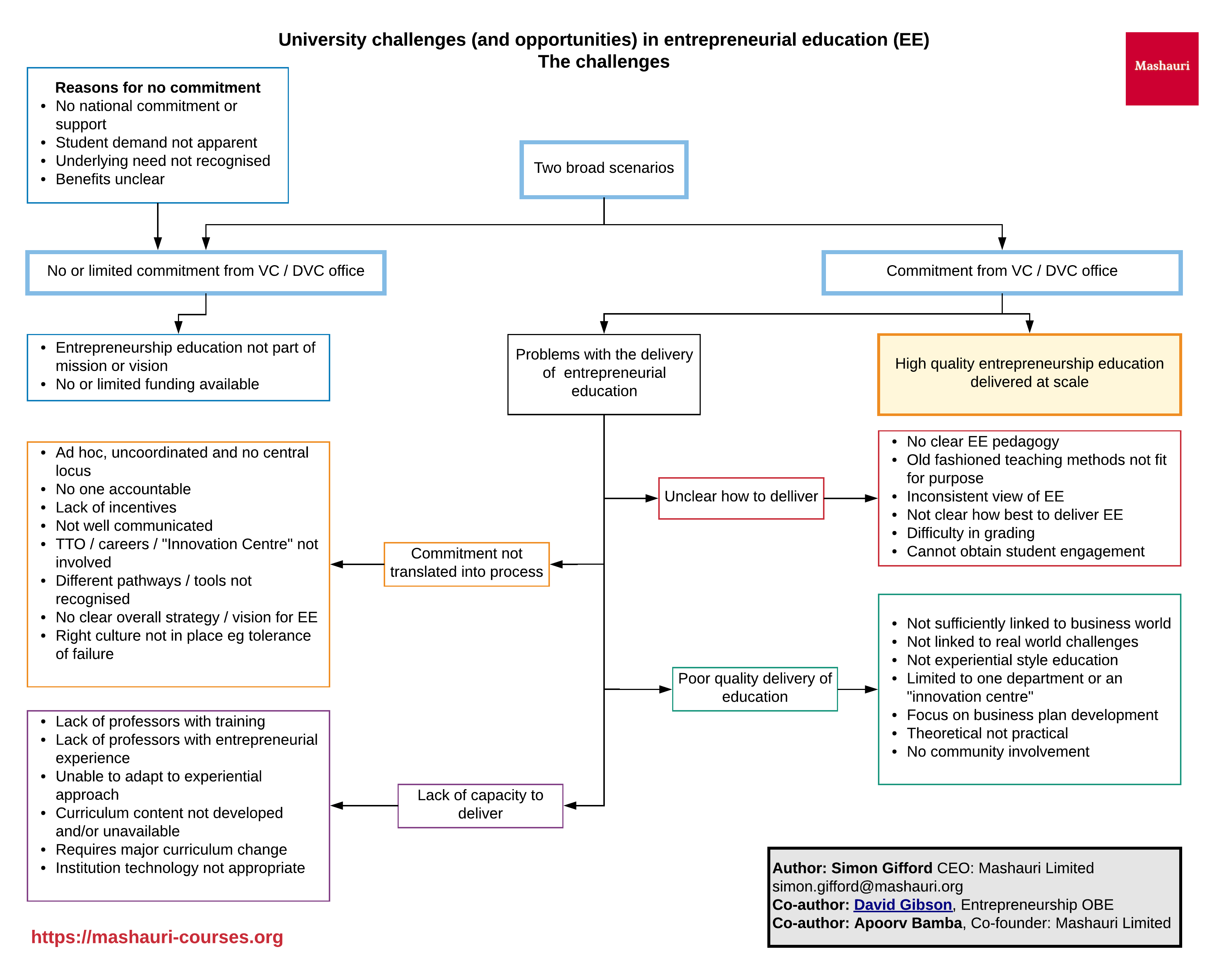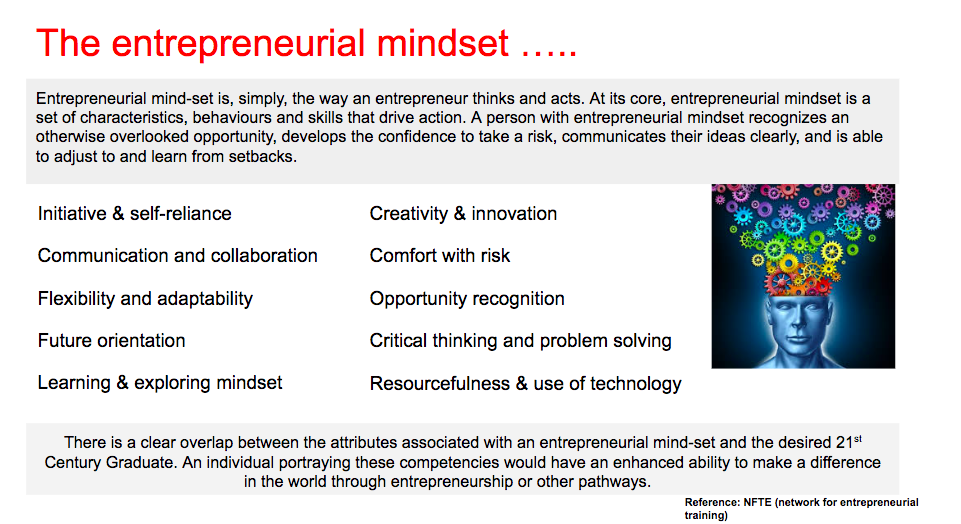How to deliver quality entrepreneurial education at scale

Introduction
Entrepreneurial education (EE) for university students has never been more important and we hope that our last article on the subject left you convinced of this.Here, we unpack some of the major challenges that universities face in delivering quality entrepreneurial education at scale; and then follow with two solutions that might help you address these issues.
To make this for easy reading, each of the sections has an infographic summarising the theme, followed by some text elaborating on that diagram. For copies of the three infographics, click here: Entrepreneurial Education Infographics and we will send them to you.
The three sections are:
- The major challenges facing universities in delivering entrepreneurial education
- A top-down approach to getting started
- An “agile” approach to getting started (borrowing lessons from entrepreneurship itself).
1. The major challenges facing universities
The infographic takes the form of a flow diagram that shows how the primary challenge of not delivering consistent entrepreneurial education is through lack of support from the top of the organisation (DVC / VC) - and indicated the main reasons why that might be the case. The second branch assumes there is top level support and then highlights the reasons why this may not translate into the desired outcome.
The four reasons why the commitment may not result in the desired outcome of quality entrepreneurial education at scale has been broken down into 4 categories; with the typical examples of why this might occur in the adjacent blocks:
- Commitment not translated into implementation processes
- Lack of capacity to deliver
- Unclear how to deliver
- Poor quality delivery of education.
In most cases, the reasons are a combination of the above, but we believe this is a useful framework to consider the challenges.
2. A top-down approach to addressing the challenges
A classic strategy, especially if the senior level commitment is missing, is to take a top-down transformation approach: develop a shared vision and cascade the actions down the organisation.
3. An agile approach to solving the problems
Senior level commitment remains a sine qua non for an institution to deliver quality entrepreneurial education at scale; but in this model the implementation of that commitment becomes more light touch. Different parts of the university are encouraged to “get on with it” in their own way (give them a compass and a destination, not a roadmap) with support from a small transformation unit with permission to make things happen. The approach is iterative in nature and allows for some quick wins and a developmental approach to becoming an institution with strong EE capability.
This may go a little against the grain for established institutions, but organisations around the world are beginning to recognise this type of flexible, bottom-up process is a more effective way of getting to results. This approach takes into account the differences between different departments and professors and for entrepreneurial education to be effective it needs to be adapted to the situation. There will be certain groups and individuals who have a greater passion and capacity for this work and it makes sense to use them as early innovators. In this agile approach, the entrepreneurial education model within the institution is clarified as it develops - in true entrepreneurial fashion.
4. Conclusion
Every institution is different in terms of their status, context and vision. Therefore those who truly wish to graduate students with an entrepreneurial mindset will need to develop their own approach. We hope that the above concepts will offer some valuable input to your thinking. Any one of us (myself, Apoorv or David) would be happy to enter a dialogue with you if you believe we might help you through this process. If you would like to download copies of the 3 infographics, please click here and we will send them to you. Entrepreneurial Education InfographicsMashauri is an entrepreneurial education platform that supports institutions in developing an entrepreneurial mindset in their students.








 The benefit of participating in this initiative is that it will allow you to position your university as one of the African leaders in entrepreneurial education. Furthermore, it will create an opportunity to reach out and play a role in your local community and entrepreneurial ecosystem.
The benefit of participating in this initiative is that it will allow you to position your university as one of the African leaders in entrepreneurial education. Furthermore, it will create an opportunity to reach out and play a role in your local community and entrepreneurial ecosystem.









